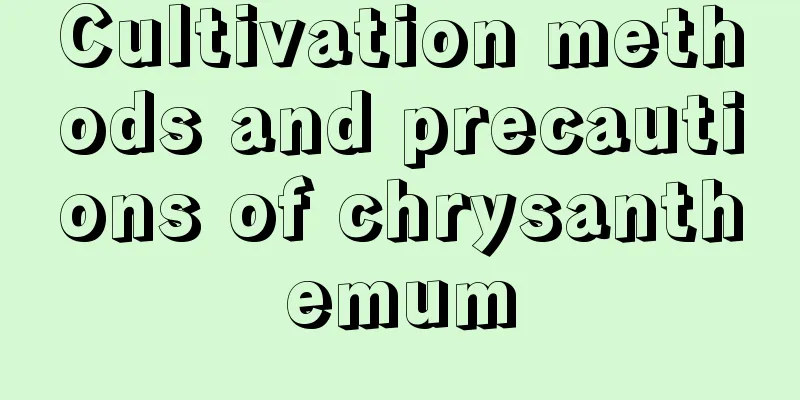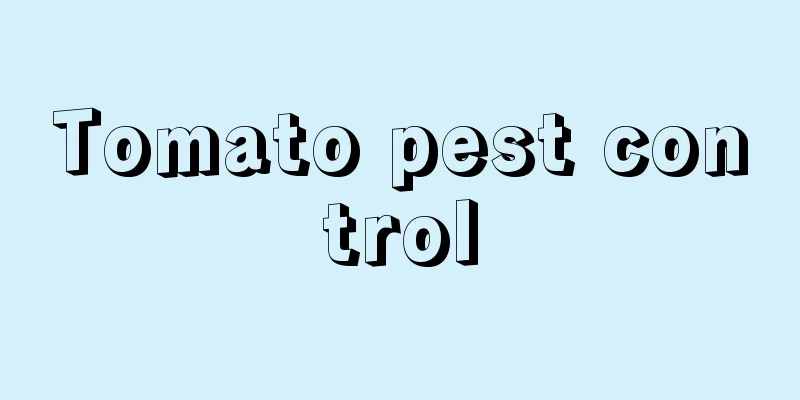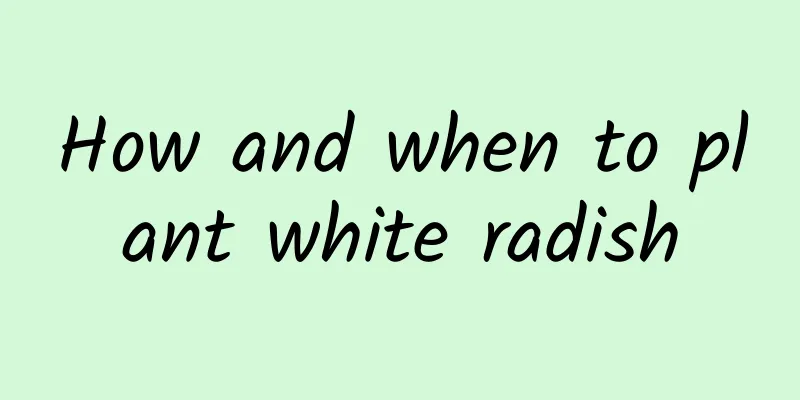Cultivation methods and precautions of chrysanthemum

1. Maintenance methods1. Substrate selection: Chrysanthemum chrysanthemum prefers loose and well-ventilated substrates. It can be made of garden soil, rotted soil, and mud pond in a certain proportion, and then mixed with organic fertilizer and a small amount of water. 2. Temperature management: The most suitable temperature is 17℃--20℃. It is best to use plastic film for insulation when winter turns to spring. Remove the film when the weather gets warmer. Increase ventilation around the plant when the temperature is above 25℃. 3. Water management: Water the seedlings after they emerge from the soil. Just keep the soil moist and do not allow excess water to accumulate in the soil. 4. Nutrient management: Use urea solution once every month and an appropriate amount of nitrogen, phosphorus and potassium fertilizers every month. It should be noted that you cannot use uncomposted fertilizer, as it will burn its roots. 2. Breeding techniques1. Sowing: Choose healthier seeds with full grains, and then dry the seeds for 2 hours before germination. Water it every day and it will germinate in about 3 to 5 days. You can sow in spring in April or May, or in autumn in August or September. 2. Overwintering: When raising plants in winter, they need to be kept warm. You can use plastic film for protection and then remove the film when the weather gets warmer. In winter, you cannot let it grow in windy places and you must pay attention to wind protection. 3. Problem diagnosis and treatment1. Root rot: Root rot of Chinese chrysanthemum is usually caused by boron deficiency in the soil. Add boron fertilizer outside the roots. It may also be that you are watering too much and you should reduce the amount of watering appropriately. 2. Cabbage borer: These insects will harm its growth. If the damage is minor, it will affect the growth of the seedlings. If the damage is severe, it will cause the leaves and roots to rot and die. If there is a silk screen, use 4000 times diluted 5% Yitaibao emulsion to spray two or three times, and be sure to spray the medicine in the heart of the vegetable. IV. Other issues1. Can it be planted in the ground: It can be planted in the ground or in a greenhouse. The planting range is large and there are no obvious regional and growing condition requirements. 2. Is it toxic?: It is not toxic, has certain benefits to the human body, can be eaten, and is a kind of vegetable. |
<<: The cultivation methods and precautions of Kaempferia galanga
>>: Cultivation methods and precautions of cliff chrysanthemum
Recommend
How to shape Araucaria bonsai
Slanted dry type When the trunk of the Araucaria ...
Does basil bloom?
Whether to bloom Does basil bloom? The answer is ...
How to prune Fraxinus chinensis
When to prune Fraxinus chinensis There is no fixe...
Ten kinds of flowers that you can't grow at home
1. Euphorbia pilosa The white juice inside the Eu...
How to grow purple bamboo hydroponically to make it more vigorous
Purple bamboo can be grown in soil or in water, b...
How long is the growth cycle of Dendrobium?
Introduction to Dendrobium Growth Dendrobium is a...
Technology of cultivating white shrimp in ponds
The whiteleg shrimp is one of the main freshwater...
What are the cultivation methods and precautions of Fugui seeds?
Introduction of Fortune Seeds The fortune seed is...
How long is the growth cycle of sword beans?
Introduction to the growth of sword beans The you...
When is the best time to repot lemons?
Lemon repotting time When the lemon grows up, the...
How and when is the best time to plant green onion seeds?
Suitable time to plant onion seeds If you want to...
How to make money
Explosion method: The money tree is propagated by...
When is the right time to prune willow trees?
Willow pruning Pruning willow trees can reduce nu...
Pest and disease control of Hawaiian coconut
1. Diseases (1) The first disease is called “brow...
What is the best month to plant kale?
Kale is a biennial herb and a horticultural varie...









